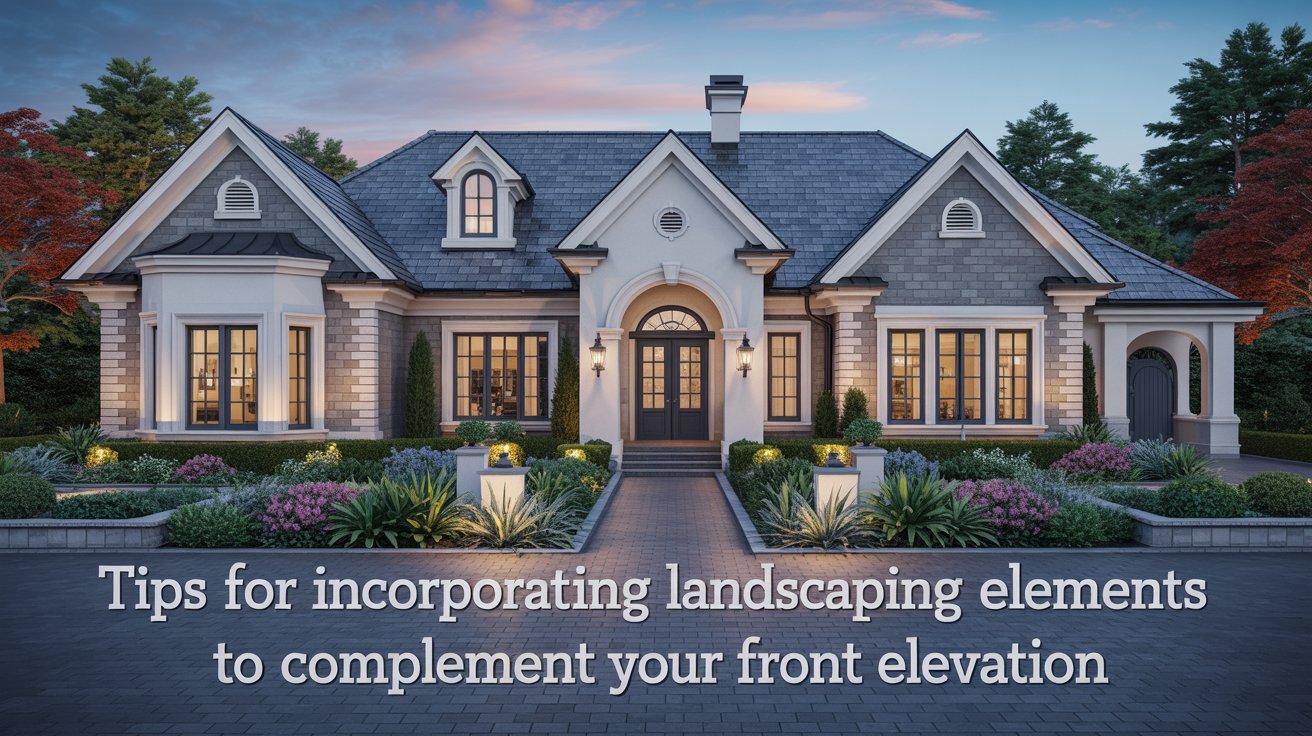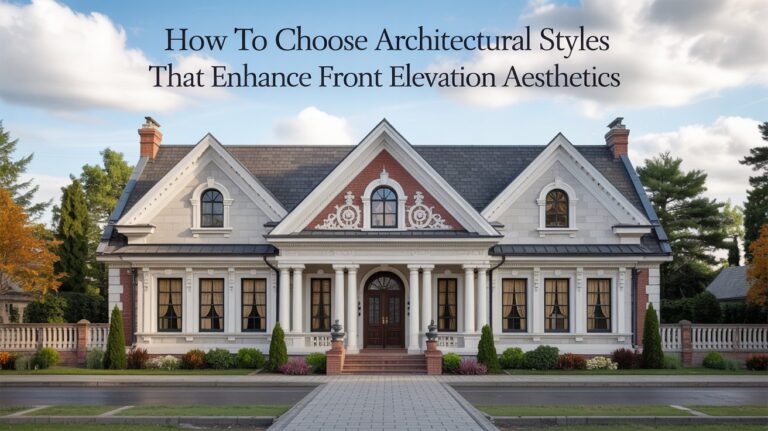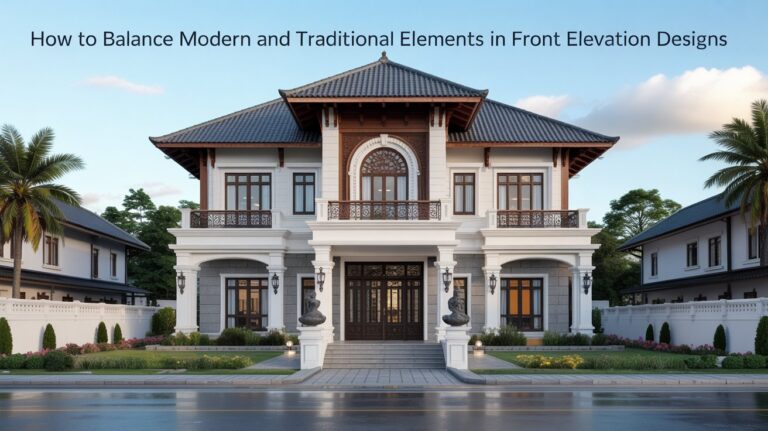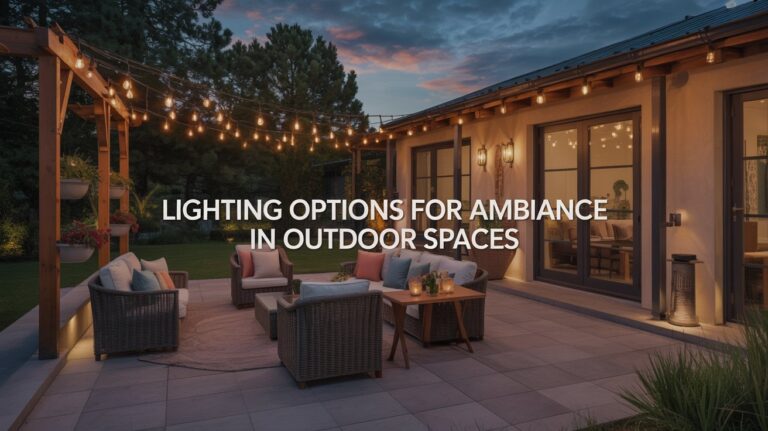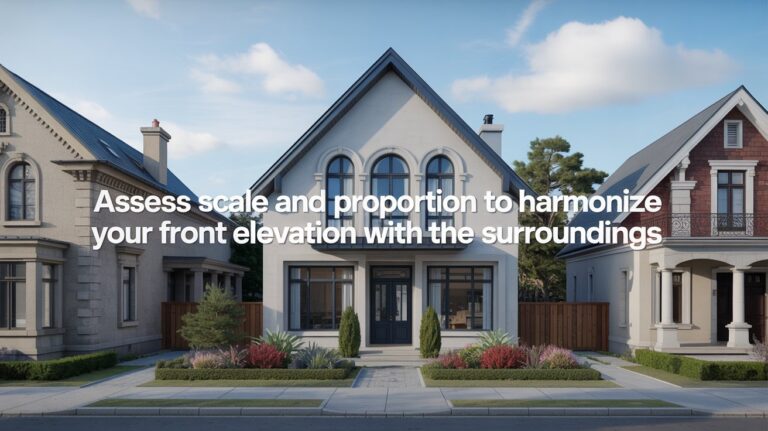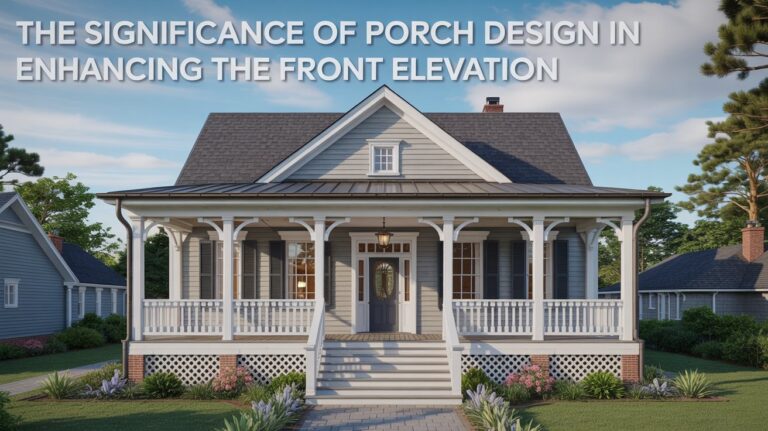Tips for Incorporating Landscaping Elements to Complement Your Front Elevation
I have been, or can be if you click on a link and make a purchase, compensated via a cash payment, gift, or something else of value for writing this post. As an Amazon Associate, I earn from qualifying purchases. Please read my full Affiliate Disclosure for more information.
To complement your front elevation, match plant textures and colors to your siding and roof lines, emphasizing verticals or horizontals that echo architectural cues. Layer hardscapes to create rhythm, and align pathways with sightlines toward architectural features. Frame details with carefully placed greenery, using symmetrical growth habits and balanced border materials. Choose native, low‑maintenance species and durable mulch to simplify upkeep. Seasonal color should enhance, not clash with, the exterior, inviting you to explore more techniques as you continue.
Key Takeaways
- Analyze architectural features and align plant scale, textures, and colors to highlight cornices, columns, and sightlines.
- Use layered hardscapes and balanced borders to guide movement and frame focal points like entrances and water features.
- Achieve symmetry by mirroring pathway widths, border materials, and lighting to create a cohesive front elevation.
- Choose native, drought-tolerant plants with low maintenance needs, ensuring pairing textures contrast subtly with exterior finishes.
- Plan post-installation care, including irrigation checks, seasonal maintenance, and documentation to maintain lasting cohesion with the front elevation.
Matching Plant Textures and Colors With Siding and Roof
When matching plant textures and colors with siding and roof, start by analyzing the existing materials’ scale and sheen. You’ll compare leaf shapes, bloom patterns, and foliage density to the siding’s panel rhythm and roofline’s angular cues. Choose plant textures that harmonize rather than compete, balancing coarse, fine, and medium elements. For color, align cool or warm tones with undertones in the exterior palette, avoiding abrupt contrasts. Plan a cohesive progression from the flower bed to adjacent groundcovers. Consider mulch color to unify bed edges with siding. This disciplined approach yields durable, visually integrated curb appeal.
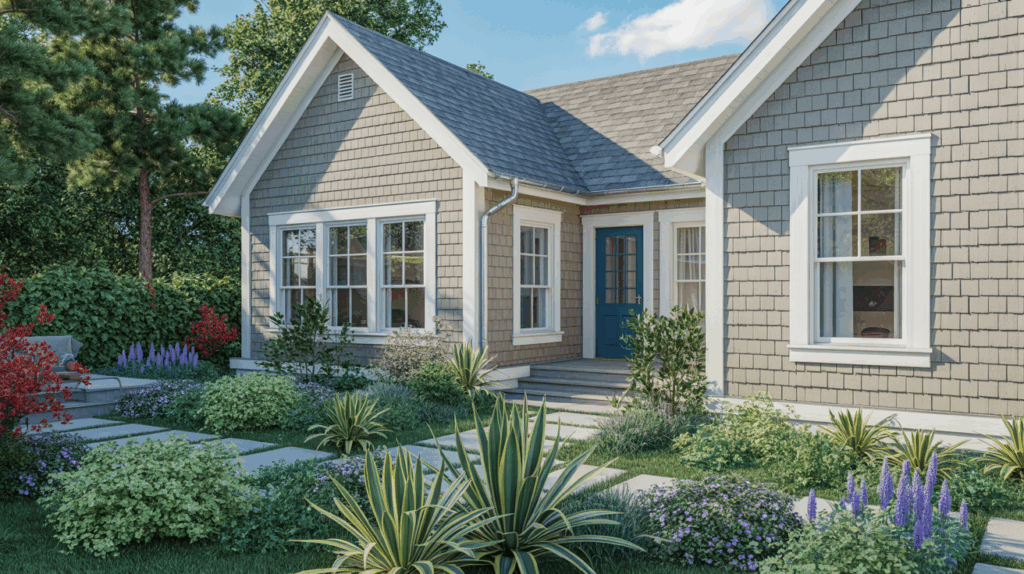
Layering Hardscapes for Balanced Curb Appeal
You’ll establish flow by layering hardscapes, guiding movement with clear pathways and subtly increasing depth. Define edges with borders to sharpen shifts between hardscape and planting, ensuring each element reads distinctly at a glance. Align plant scale to the hardscape rhythm, creating harmony across pathways, borders, and surrounding beds.
Layering With Pathways
Pathways should guide the eye and pace the walk, layering hardscapes in a way that complements plantings without overpowering the façade. You’ll balance path width, material, and elevation so progression read as intentional steps, not random routes. Use thinner pavers near entry points and expand into wider bands toward garden areas to create visual rhythm. Integrate subtle changes in texture to emphasize layering rather than dominance. Include garden fountains as focal accents where sightlines align with entrances, and plan for outdoor lighting to illuminate edges without glare. This disciplined approach yields cohesive curb appeal and functional flow.
Edge Define With Borders
Edge define with borders builds the linear punctuation that frames planting beds and softens hardscape edges. You’ll create a crisp changeover between lawn and beds, using border definition to control turf encroachment and maintain clean lines. Landscape edging should be installed with consistency, height, and material harmony to complement your elevation’s architecture.
- Material choice and color coordination
- Proper trench depth for stability
- Seamless transitions between surfaces
- Maintenance routines for sharp edges
- Seasonal checks to prevent uplift and gaps
Plant Scale Harmony
To achieve balanced curb appeal, plant scale harmony folds greenery into the hardscape by layering elements from foreground to background, ensuring that each plant reads at the intended distance and proportion. You’ll align plant height to sightlines, placing taller forms toward the rear of beds and shorter specimens upfront to create visual recession. Maintain consistent plant density to avoid gaps and crowding, using transitional species to bridge scales smoothly. Assess mature size during selection, not just current size, and prune to preserve silhouette. This method preserves rhythm, reduces dominance, and supports a cohesive frontage that feels deliberate and breathable.
Creating Symmetry With Pathways and Borders
Symmetry in front-yard design hinges on how pathways and borders frame the entrance and balance focal points. You’ll create harmony by aligning paths with sightlines and using mirrored border treatments that repeat on each side of the entry. Incorporate garden lighting and restrained water features to emphasize symmetry without clutter. Establish width consistency, true curves, and precise joints to guide the eye toward the door.
- Mirror path widths on both sides of the entrance
- Use equal border materials for cohesion
- Place lighting at equal intervals for balance
- Integrate a centered water feature as a focal point
- Choose plants with symmetrical growth habits
Framing Architectural Details With Plant Placement
Framing architectural details with plant placement means pairing foliage with sight lines and architectural lines so highlights—like cornices, columns, or cornice returns—read clearly from the curb. You’ll select plants that emphasize verticals beside doorways and horizontals along cornice lines, guiding the eye toward articulation rather than distraction. Favor masses that temper bold forms with restrained textures, ensuring year-round structure. Integrate garden sculptures and water features as focal anchors at appropriate setbacks to reinforce hierarchy without crowding lines. Maintain contrast between foliage and material finishes, arranging plantings to frame, not obscure, architectural details while sustaining easy maintenance and seasonal interest.
Choosing Low-Muss and Easy-to-Maintain Landscaping
Opt for low-maintenance plant picks that stay vibrant with minimal care, prioritizing drought tolerance, disease resistance, and compact form. Pair these with an easy-care seasonal layout that reduces pruning, fertilizing, and seasonal bed tweaks while maintaining year-round curb appeal. You’ll balance durability and function by aligning plant vigor with your site’s light, soil, and irrigation patterns.
Low-Maintenance Plant Picks
Low-maintenance plants save time and effort while keeping your front elevation welcoming; the key is selecting species that tolerate variable conditions, require little supplemental irrigation, and resist pests.
- native species suitable for your climate
- drought tolerant plants that thrive with minimal watering
- compact forms for small front yards
- evergreen textures for year-round structure
- pest-resistant varieties with low fungicide needs
Choose species that are adaptable, low-maintenance, and visually cohesive with hardscape. Favor drought tolerance and penetration-resistant roots to reduce irrigation and soil disruption. Pair textures and colors for contrast without excess pruning. Establish with mulch and appropriate spacing to minimize upkeep and promote long-term health.
Easy-Care Seasonal Layouts
Seasonal layouts that stay easy to care for hinge on predictable routines and flexible plant material. You select durable perennials and operable annuals that respond to regional cues, then layer them by bloom window and sun exposure to minimize maintenance. Establish a consistent irrigation schedule with drip lines and smart controllers to reduce water waste. Integrate garden lighting strategically to extend usability without added complexity, using low-voltage fixtures and seasonal timers. Include water features for audible interest with minimal upkeep, such as recirculating waterfalls or bubblers. Regular pruning and mulch disciplines keep edges clean, preventing overgrowth and clutter.
Seasonal Color Schemes That Complement Your Elevation
Seasonal color schemes should align with your front elevation’s architectural cues, ensuring plant choices harmonize with trim, brick, and roofing tones while delivering year-round curb appeal. You’ll apply color coordination to select blooms and foliage that echo keynote materials, then choreograph contrasts for seasonal planting that stays cohesive across shifts.
- Match bloom hues to trim accents
- Use evergreen anchors for winter structure
- Integrate warm-cool pairings by season
- Balance massing with focal color pops
- Consider soil, sun, and moisture for lasting color
This approach remains precise, actionable, and visually informed, avoiding clutter while guiding thoughtful palette decisions.
Practical Maintenance Tips to Sustain Your Look
Maintaining your front elevation requires a disciplined routine that translates design intent into lasting curb appeal; start with a monthly inspection to catch issues before they escalate. You’ll implement a simple timetable: prune perennials after flowering, remove competing growth around foundations, and monitor drainage to prevent erosion. For garden lighting, test all fixtures quarterly, swap failing bulbs, and seal connections to guard against moisture. Review irrigation systems weekly: check for leaks, adjust runtimes with seasonal demand, and calibrate emitters to avoid soggy beds or dry patches. Document changes, refine spacing, and preserve sightlines to maintain a cohesive, purposeful exterior.
Conclusion
Elevate your front elevation by pairing textures and tones with precision. You’ll layer hardscapes to balance scale, then guide sightlines with pathways that frame architectural details. Use plant placements to frame features and maintain a cohesive rhythm, choosing low-maintenance varieties that suit your climate. Rotate color so seasonal blooms echo existing siding and roof hues. Keep pruning and mulching strict to sustain structure, while periodic inspections prevent drift from the blueprint. Your curb appeal stays sharp, timeless, and resilient.
